Bouldering tips for beginners
When you’re just getting started bouldering, there’s a lot to learn. It’s really your own personal golden era of climbing. Everything is new, and even climbing in a gym feels like limitless exploration. Each movement is a mystery, every route is like a riddle.
Like most people these days, you’re probably getting started in the gym. It’s the perfect place to safely learn how to climb without throwing all the risk and real-world challenges of outdoor climbing into the mix. And whether you’re getting started in a roped gym or a bouldering gym, you’re bound to have a good time. After all, it’s one the most innate types of movement there is. Aside from running and swimming, it’s probably the most natural sport to the human body.
However there are a lot of ways it can all go wrong. Injury is common for beginning boulderers, and it’s usually not the type you’d expect. Overworking yourself, training bad habits, and focusing too much on one aspect of strength are all common pitfalls. As a new climbing season begins, even experienced climbers who are getting back into the sport after a winter away should remind themselves of these important tips. After all, bouldering can be a lot of fun, or a lot of pain. These tips will help you keep your body in peak form to maximize the fun and avoid injury.
Always start slow
So rather than focus on the technique of how to climb, today we’re going to focus on how to protect against injury when you’re starting out. That’s because learning how to climb is the fun part. No point in spoiling it with a how to guide. However, injury is never fun, no matter how you slice or sprain it. So today we’ll cover some key concepts for avoiding the most common injuries in bouldering.
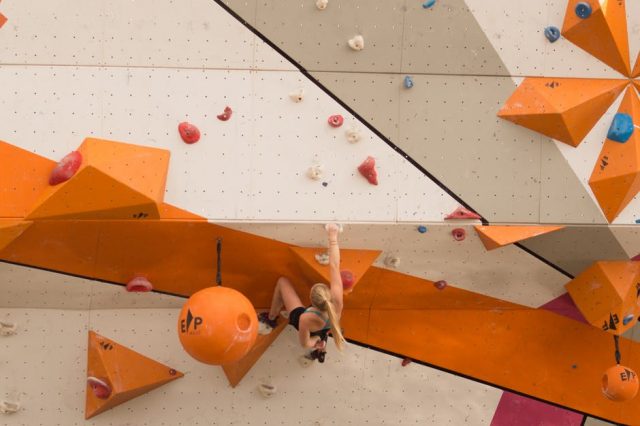
First and foremost, bouldering is a high-intensity sport. You’re about to make your body work harder than it ever has before. Your muscles aren’t ready, your tendons aren’t ready, and if you’re not careful, you’ll wind up hurting something.
We’ll talk about warming up later, but what I mean by starting slow is take it easy for the first couple of weeks. Don’t try your absolute hardest. Don’t scream at holds and sweat and shake. Definitely don’t try the same hard route over and over again. It’s a sure way to over stress muscles that aren’t ready for this kind of exertion.
Instead, start on easy boulder problems. Ones you can do. After you’ve warmed up for the day, try a couple of harder ones, but don’t get stuck on them. If it’s too much for your body to handle, give it a week and come back to it. It will still be there. As your body adjusts to the demands of bouldering, you’ll know, and you’ll be ready to try increasingly harder problems.
Take long rests
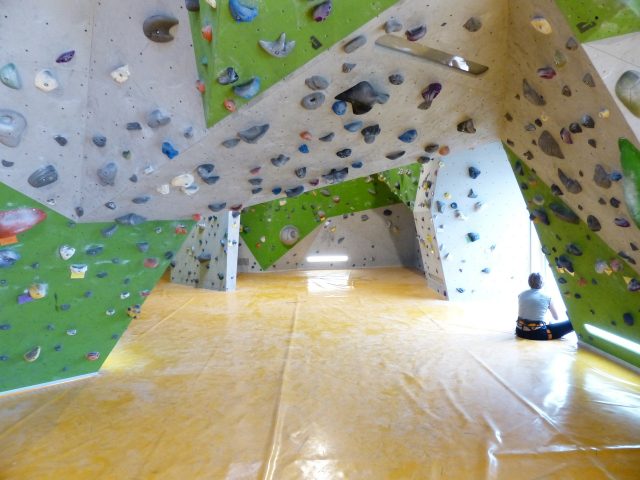
The first thing you’ll probably notice on day one is that your arms wear out fast! Particularly your fingers and forearms. It’s hard work holding onto little crimpers all day. You’ll be lucky if you can even climb for a solid half an hour on your first day. Don’t worry about it, that’s normal, and your body will adjust.
One good way to maximize your climbing time each day though, no matter how experienced you are is to take long rests. When you’re first starting out, it doesn’t feel natural to sit around and wait when no one’s on the wall. But that’s one of the most important times in bouldering. Resting is just as important as climbing. Maybe more so.
So take full rests. If you get antsy, it can be helpful to set a timer for anywhere between five and ten minutes. Take your time with your climbing. You have all day, and you’re surely not going to last that long. Use your rests to stretch and shake your arms. Or review the problem you’re working on in your head to get the moves dialed in your mind.
Care for your skin
You’ll notice when you first get started that bouldering is really hard on your skin. The first couple times you go, you’re liable to tear your fingers open if you swing around too much. Be sure to climb a variety of types of problems and not swing around in the cave the whole time. A lot of dynamic movement is a good way to cause blisters and tears that will be hard to heal.
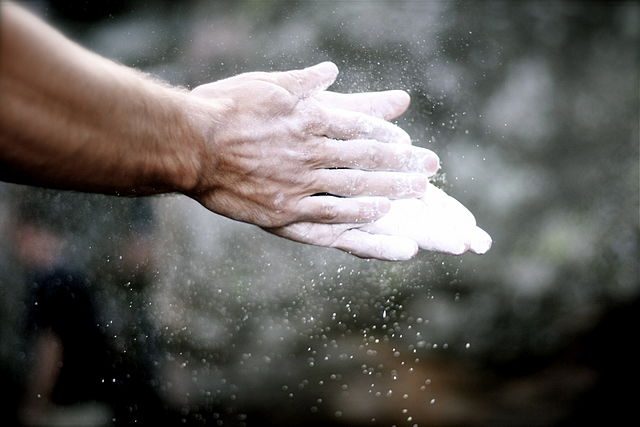
However, once your skin starts to develop strong calluses, you may be even more prone to getting flappers. That’s what it’s called when you pull a callus off climbing. This happens because your contact points develop tough calluses but the skin right next to them can remain quite soft and weak. Eventually, the callus tears off at the edges.
In order to prevent that, use a nail file to keep your calluses from getting too beefy. It can also help to climb problems with big, grippy slopers that grind the skin on your whole hand. That way, all your skin gets tougher, not just the pads you use when you grip a normal hold. After every session, you may want to use lotion or moisturizer on your hands to help your skin heal more quickly.
Always warm up and stretch
Most people don’t realize how acrobatic climbing is. When you really get into it, bouldering especially involves just as much flexibility as strength. You’ll find yourself contorting into all sorts of positions you never thought possible. If you’re not stretched out and warmed up, you’ll run the risk of pulling muscles and injuring joints.
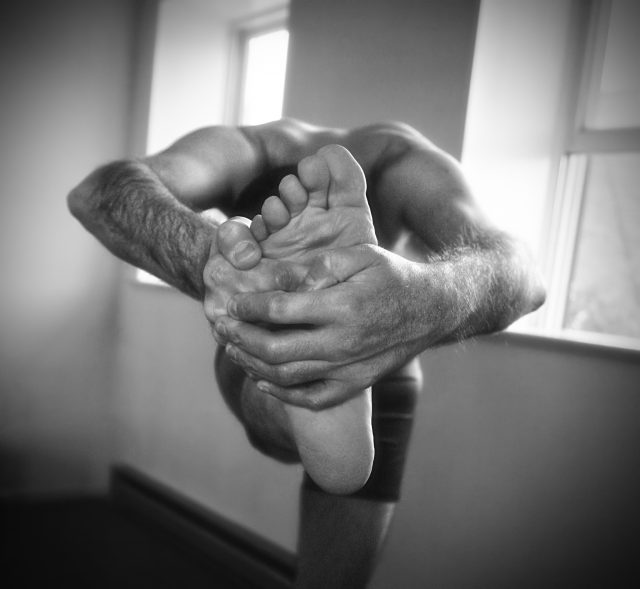
These days, almost every bouldering gym also offers yoga classes to members for free. You should ask about them and get involved. Even if you don’t have yoga classes available to you, you should get into it on your own. Yoga is one of the best ways to keep your joints healthy and develop core strength that will be invaluable on the walls.
Before each climbing session, you should stretch and warm up as well. Everyone develops their own routine for doing this. So you’ll have to decide what works best for you. However, a good rule of thumb is to start on the easiest climbs and stay on them for at least ten minutes. Whether you do other exercises to warm up or not, you should always start by climbing a number of beginner routes. Even the most experienced boulderers still start their sessions by warming up on beginner boulders.
Exercise both sides of your muscles
Most people don’t think of their muscles as two sided machines. But almost every muscle in your body has an opposite. Together, they’re called muscle groups. The only exception I know of is in your eyeball. So if you apply that idea to climbing, you’ll realize you’re doing a lot of pulling, but far less pushing. It happens to your fingers, your elbows, and your shoulders most commonly and it causes what’s called tendinitis.
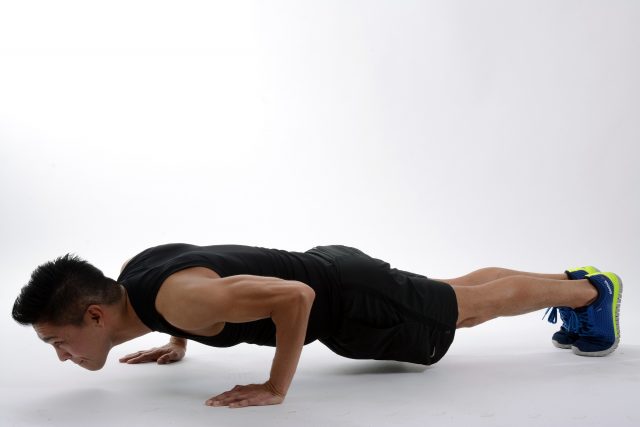
If you never balance your muscles out, you could develop tendinitis. Really bad news. Over time your muscles will start to pull on your joints too much in one direction. Sharp pain in the joint, most commonly your inner elbow is the telltale sign. It can affect you for years once you develop it and the only way to deal with it effectively is to balance out your musculature.
So instead, start from a place of balance and avoid injury altogether. Pushups are a great way to develop the oppositional strength to climbing. This will develop pushing force in your shoulders, elbows, and even your wrists. Unfortunately, it can be pretty hard to balance your fingers out. Wrapping rubber bands around your fingers and expanding them against the force of the band is a good way to do it though. Resistance bands are also a great way to work your bigger joints in both directions.
Take rest days
When you’re just getting started, rest days are sometimes the hardest days of all. After all, the bouldering bug can bite pretty deep. I’ve known a lot of beginners who got so into bouldering when they first started that they climbed every day for weeks straight. In fact, I did that. I always have to make a conscious point of taking rest days whether I’m climbing, running, or doing any other work out. I just get so into it.
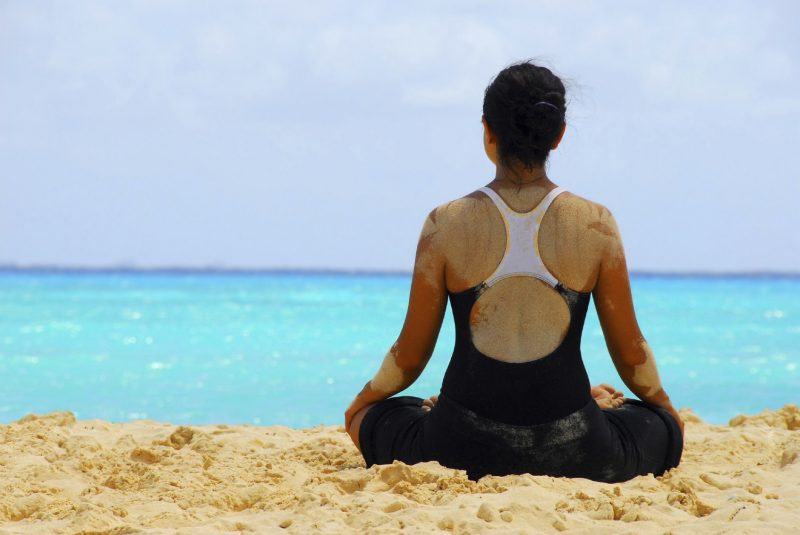
Why take rest days? Well, your muscles need time off in order to heal and grow. If you’re constantly working them, they’ll never actually get any stronger and you’ll be wasting all your time and energy. In general, climbing for two days and then resting for one is a good rule of thumb when you’re starting out. However, once your body gets used to the exertion, three days on, one day off is perfectly alright.
Use your rest days productively though and you’ll be able to maximize your progress. After all, you’re really resting your arms and fingers. Your legs don’t need a rest on your off days. So go for a long hike or a big run. Do leg day in the gym, or a really intense core workout. Be sure to eat lots of protein and natural food on your days off too. Heck, you should do that every day. But your rest day is a time to let your arms and fingers heal, so give them a little love. Light stretching or yoga is also a great idea for your rest days.
Eat healthy meals
So I must have mentioned healthy eating two or three times already, and I’m going to mention it again. That’s because it matters so much! More than almost any other sport, climbing will let you know when you’ve been eating well and it will let you know when you’ve been falling off. It’s such an intense sport that you can actually feel your diet make a difference every day.
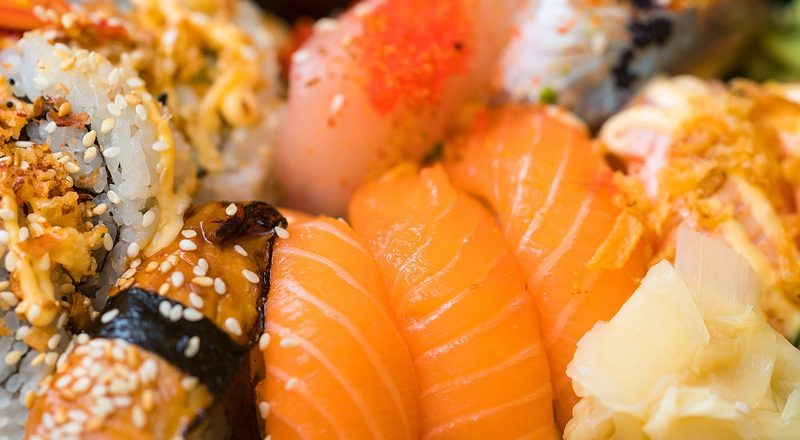
That’s not to mention how your diet affects your muscle growth. If you’re eating garbage and climbing hard, you may see improvement, but you’ll be selling yourself short on all the hard work you’ve been putting in. Switch that to a protein-rich diet of natural foods with lots of healthy fats and you’ll start to see results fast.
After all, you are what you eat. There aren’t many sports as intense as bouldering. If you’re working hard and eating well, you’re sure to see a major change in your body over the next couple of months.
If you’re interested in knowing more about high-performance diets, click here to read about the ketogenic diet and how it can help you maximize your potential. Or, if you’re curious to know more about the science of muscle growth, check out this article. It dives in deep on how to maximize muscle growth and what exactly signals a successful workout.
If you have any comments then please drop us a message on our Outdoor Revival Facebook page If you have a good story to tell or blog let us know about it on our FB page, we’re also happy for article or review submissions, we’d love to hear from you. We live in a beautiful world, get out there and enjoy it. Outdoor Revival – Reconnecting us all with the Outdoors.





